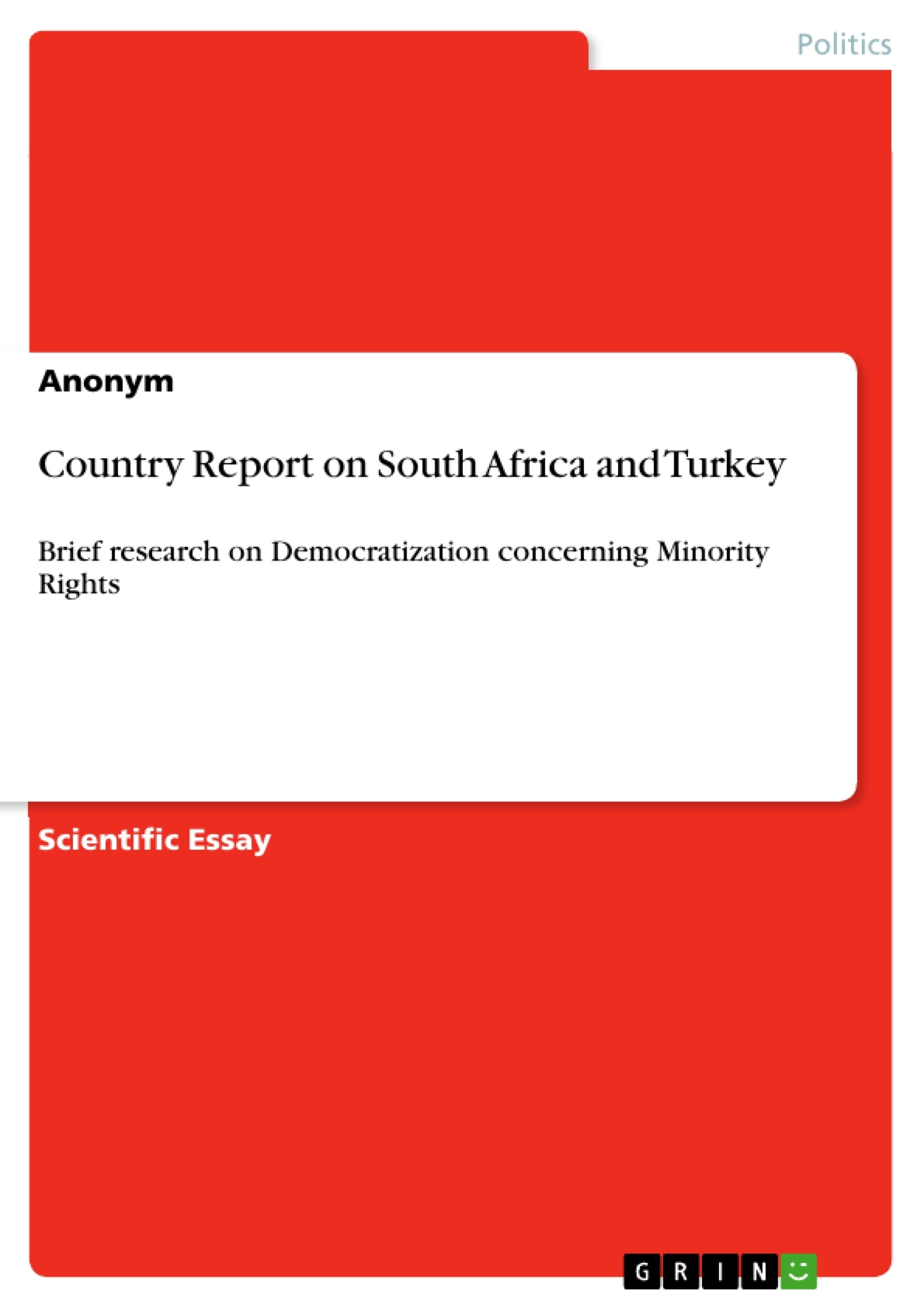The objective of this paper is to give a brief overview of the development of ‘Minority Rights’ in South Africa and Turkey from the twentieth century onwards. In the case of South Africa the term ‘Minority Rights’ has to be understood in a figurative sense, because the white population as the oppressors over the black population was eventually the numeral minority. The paper is organized in two chapters. The first chapter will deal with the historical background of minority rights and their present situation first in Turkey and then in South Africa.
Inhaltsverzeichnis (Table of Contents)
- I. Introduction
- II. Minority Rights
- A. Turkey
- B. South Africa
- III. Conclusion
Zielsetzung und Themenschwerpunkte (Objectives and Key Themes)
This paper aims to offer a concise overview of the progression of "Minority Rights" in both South Africa and Turkey, starting from the 20th century. It analyzes the historical background, the present situation, and provides a brief comparative conclusion for both countries.
- Historical development of minority rights in Turkey and South Africa
- The emergence of the Kurdish Question in Turkey
- The impact of apartheid on minority rights in South Africa
- The challenges of nation-state building and minority rights
- Comparison of the democratization processes in both countries
Zusammenfassung der Kapitel (Chapter Summaries)
Chapter I: Introduction
This introductory chapter establishes the purpose of the paper, focusing on the evolution of "Minority Rights" in South Africa and Turkey, taking into account the unique context of each nation. The paper is structured into two main chapters, each focusing on one country, followed by a comparative conclusion.
Chapter II: Minority Rights
A. Turkey
This section examines the Kurdish Question in Turkey, tracing its emergence to the nation-state building process that began after World War I. It highlights the traditional societal structure of the Kurdish population and its incompatibility with a centralized state organization. The chapter also analyzes the effects of constitutional amendments and the government's efforts to address the Kurdish issue, including initiatives towards a "democratic Kurdish opening".
B. South Africa
This chapter explores the legacy of the apartheid regime in South Africa, outlining its discriminatory policies and the systematic segregation of races. It delves into the various laws implemented to enforce racial discrimination and the growing resistance that eventually led to the dismantling of apartheid. The chapter also discusses the transition to a democratic system and the challenges of addressing the deep-rooted social and economic inequalities that persist.
Chapter III: Conclusion
This chapter is excluded from the preview to avoid spoilers.
Schlüsselwörter (Keywords)
The key concepts explored in this paper include minority rights, democratization, nation-state building, ethnic conflict, historical development, Kurdish question, apartheid, social inequality, political participation, human rights, and comparative analysis.
- Quote paper
- Anonym (Author), 2010, Country Report on South Africa and Turkey, Munich, GRIN Verlag, https://www.grin.com/document/149104



